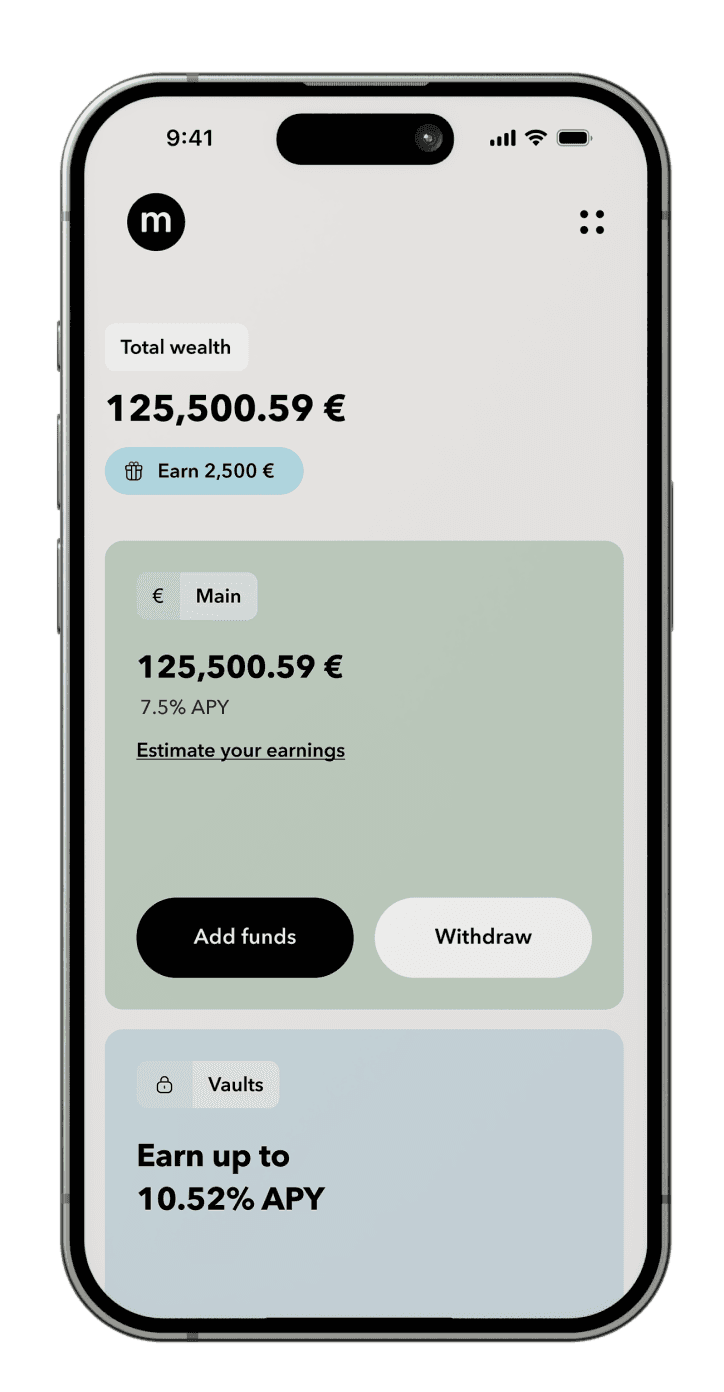Live your best financial life
Earn daily returns up to 10.52% APY
or borrow on better terms—loved globally.Our Products


SmartSaver
10.52% APY
Daily returns and the flexibility to withdraw anytime. €100+ million already paid out.
Loved by over 1.4M

Great platform
Great platform, trustworthy, and good APY's.
The best part, no fees on card deposits and withdrawal's.

Clear terms & decent returns
Clear terms & conditions. Relatable showcases. Putting your money to work for you quickly. Withdrawals take a little longer than competition, but this is clearly stated. So all in all, seems to be a nice investing alternative.

A revolution
Monefit has revolutionized my financial life! Since I started using, I have a better overview of my finances and I've been able to save and invest strategically. Fantastic for anyone looking to manage their finances more efficiently!

Quick support, Good company
The Company is doing the job very well.
The Platform is working also nice. I would like to use an application but it is still missing but never mind. I am completely satisfied. Thank you

Easy to invest
Very easy. Very transparent account information. Very good interests on a daily basis and possibilities to create vaults with a much higher interest rate.

Top priority
Your privacy is our utmost priority. All your data stays encrypted, safe, and purely yours.

We are recognised
Monefit is part of the Creditstar Group - a company recognised for its high performance, revenue growth, profitability, and innovation in IT, ranking among the top companies in the global Banking and FinTech industry.
